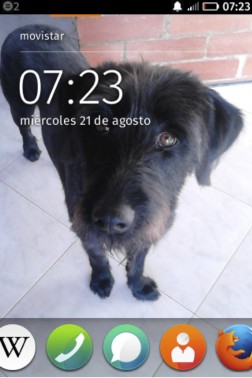In August, 2013, I traveled to Bogotá, Colombia to observe how feature-phone users adapted to smartphones—in this case, our Firefox OS phone. I recently blogged about our study design in detail, but essentially we followed 24 new Firefox OS users for approximately 20 days, using interviews and surveys to track their engagement with the phone. Now that our analysis is complete, I’d like to share our findings over several blog posts.
Journey from feature phone to smartphone: Meeting Expectations
While smartphone penetration is low in Colombia (around 8%), our middle-class participants came to the study with expectations about smartphones.
Participants told us that their expectations for the Firefox OS phone were mainly influenced by:
- Previous desktop Internet use, including internet cafes, personal laptops, and services like Facebook
- Previous feature phone use
- External messaging, including advertising, peers, and other media
Participants’ transition from feature phone to smartphone had three phases: Meeting Expectations, Exploration, and Intuitive Integration. This transition describes how a phone moves from “a phone” to “my phone” in the life of a participant. The timing of these phases varied among our participants.
Meeting Expectations
In the Meeting Expectations phase, participants explored familiar baseline features from their previous Internet and feature phone usage. For example, the most heavily used features in this phase included the phone, Facebook, mail, contacts, and the camera.
During this phase, our participants found real value and delight in these basic features, including email, camera, and Facebook/Twitter. They loved the video functionality. For example, Monica said: “For his birthday, I recorded a video. It worked at night. I wanted to record the moment because we were celebrating his bday. It was a circus night… I was able to record it and the video was pretty cool.”
Participants also enjoyed the constant Internet connectivity the phone offered—it made their in-between times, like time on transit or in line, more useful.
How can we help at this stage of the Firefox OS journey?
At this stage of the journey, we can help users by making these baseline features easy to find and use. Here are some areas for improvement, many of which we are already working on:
Keyboard quality: This might mean improving the way touch registers on the phone itself or improving the design of the keyboard.
- Camera quality: Though camera quality can vary depending on phone model, participants wanted more pixels, a flash, and zoom.
- Connectivity: Ensure that connectivity is as constant and as fast as possible. We did hear feedback that Internet connections were slow or unstable. There may have been a variety of reasons that participants’ connections weren’t optimal; however, the participants generally weren’t able to parse out the differences between mobile operator, phone, and phone operating system (and neither can I, when I can’t connect on my mobile phone).
- Market-specific features: For example, many of our Colombian participants downloaded calculators. Should we consider making calculators part of our base set of apps?
Overall, we can look at the Meeting Expectations stage of the phone journey as an on-ramp to the mobile digital world. Mozilla should strive to make these initial experiences as smooth as possible. We will need to think about the markets we are entering, how baseline expectations will vary from market to market, and how we can meet them.
My next blog posts will focus on the next two phases of the Firefox OS user journey, Exploration and Intuitive Integration.
Thanks to our research partner, Sylver Consulting, and the many Mozillians who supported this project.

